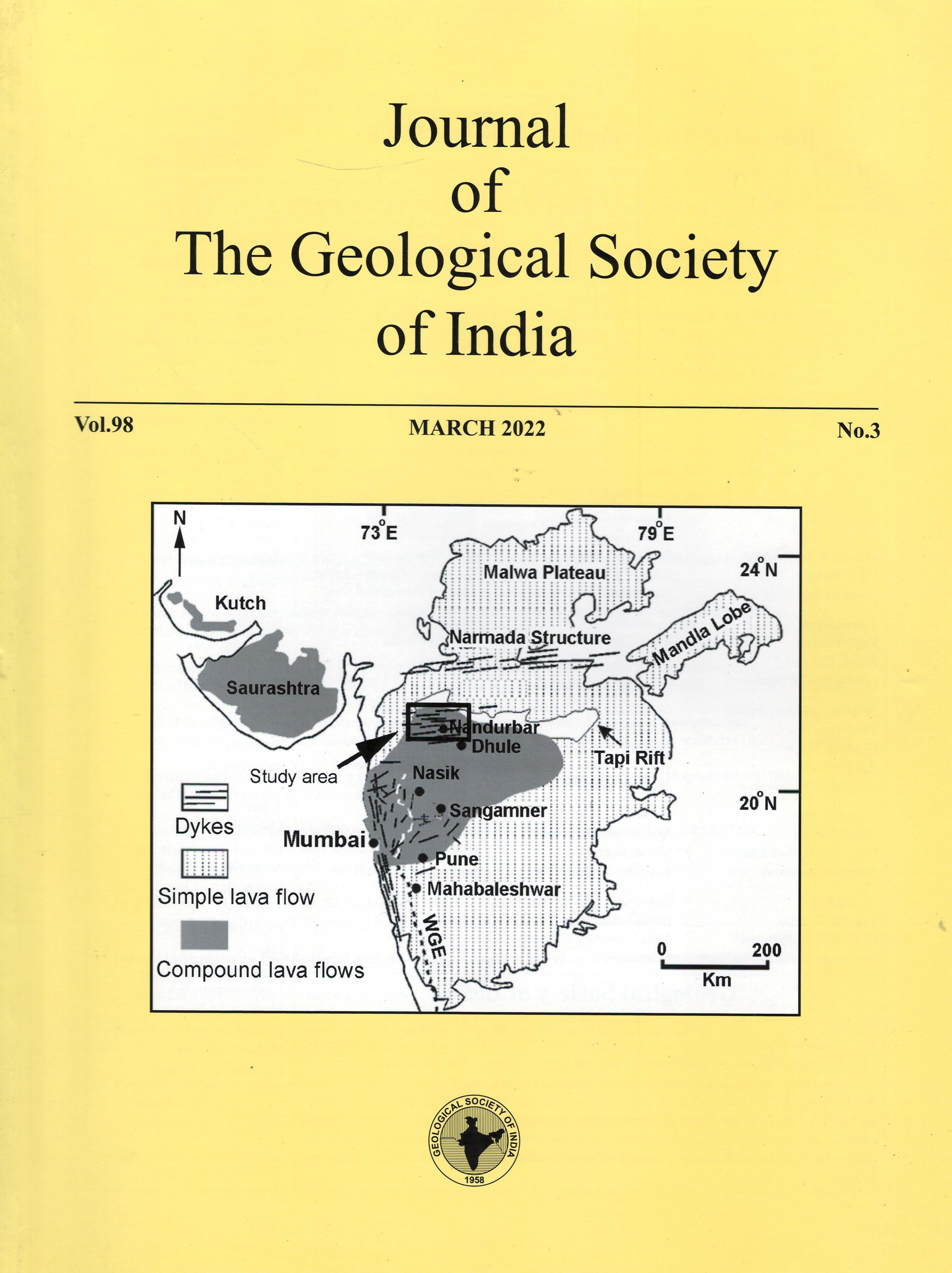Sikkimite: A New and Rare Suite of Potassic-perpotassic Syenites from South Sikkim, Lesser Himalaya, India
DOI:
https://doi.org/10.1007/s12594-022-1982-5Keywords:
No KeywordsAbstract
A new and rare suite of radioactive, plutonic-hypabyssal, nonperalkaline to peralkaline, potassic to perpotassic syenites have been reported as dyke-like and/or lensoid bodies (c. 100 m x 20 m to 5 m x 2 m) within the Buxa and Daling formations (Proterozoic) and Gondwana Group of rocks (Permo-Carboniferous) within the Ranjit tectonic window (RTW) and its peripheral parts in south Sikkim. These are christened in this work as ‘Sikkimites’ considering their unique field occurrences, petrography, mineralogy and geochemistry, unlike any known saturated potassic - perpotassic syenites from the plutonic environment from India or elsewhere. The modal (vol.%) mineralogical variations observed within the potassic syenites include orthoclase (57-65%) with subordinate to minor amounts of brown alkali amphibole (kataphorite, 3-32%), aegirine (1-20%), biotite (13% in one sample), opaque minerals (ilmenite and magnetite, 4.2-24.5%), quartz (traces to 12.9%) and minor to trace amounts (< 3%) of apatite, sphene, zircon, and monazite. Compositionally, the Sikkimite suite range from non-peralkaline to highly peralkaline types (with Mol. Na2O + K2O/Al2O3 varying from<1 to1.2 to 1.5), mildly-perpotassic (Mol. K2O/Al2O3>0.83 to 0.96) and perpotassic (Mol. K2O/Al2O3>1 and Wt.% K2O/Al2O3 = 2.52-23.9) and Wt.% K2O/Na2O(3.05-23.9). The potassic syenites shows wide variations in major, minor and trace elements with significant enrichments in TiO2, Ba, REE, Y, Zr and Nb. The petrogenetic model for these rare potassic syenite suite of rocks (termed here as Sikkimite) invokes a near-primary origin by partial melting of enriched, amphibole- and phlogopite-bearing heterogeneous mantle, having chemical signatures of both non-subduction and subduction-related metasomatism. Ar40-Ar39 dates on them indicate a Cretaceous age (100-90 Ma) suggesting their links to either the widespread igneous manifestation of the Kerguelen or the Marion plume of the Indian Ocean.. These rare potassic syenites were apparently brought to the near surface environments in south Sikkim due to the collision of Greater India with Asia and the ensuing Himalayan thrusts from the north (MCT1 and MCT2) which shifted the crystalline basement and the Gondwana rocks maximum to the south, unlike any other parts of the Himalaya.

 H. M. Varma
H. M. Varma






